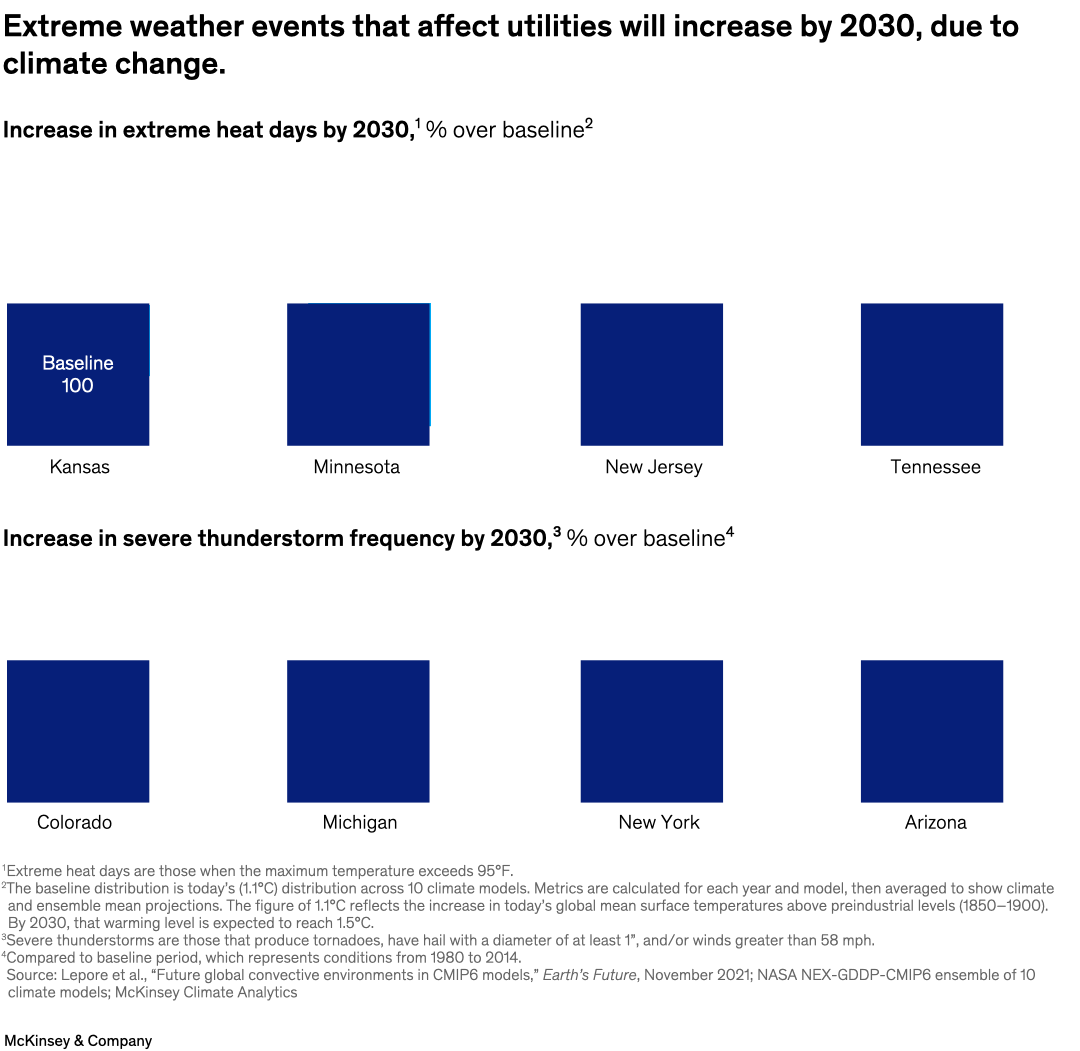Extreme weather events can pose a threat to the performance and reliability of power grids—especially when there’s a high demand for electricity. In the United States, for example, Minnesota could see a 75 percent increase in extreme heat days by 2030 while Colorado expects a 29 percent increase in severe thunderstorm frequency, partner Alfonso Encinas Fernandez and coauthors note. To address future grid needs, planners and utilities can consider taking an integrated approach to system planning.

Image description:
Two sets of of box diagrams, with 4 boxes in each, display different states’ projected increase by 2030 in weather events that will affect utilities. The first series is a projected increase in the number of extreme heat days as a percentage over the baseline of 100%. The states include: Kansas, 25%; Minnesota, 75%; New Jersey, 43%; and Tennessee, 23%. The second series is the projected increase in severe thunderstorm frequency as a percentage over a baseline of 100%. These states are: Colorado, 29%; Michigan, 19%; New York, 17%; and Arizona, 22%.
Source: CMIP6, Lepore et al. 2021; NASA NEX GDDP CMIP6 ensemble of 10 climate models; McKinsey Climate Analytics.
End of image description.
To read the article, see “Grid planning under uncertainty: Investing for the energy transition,” December 5, 2023.